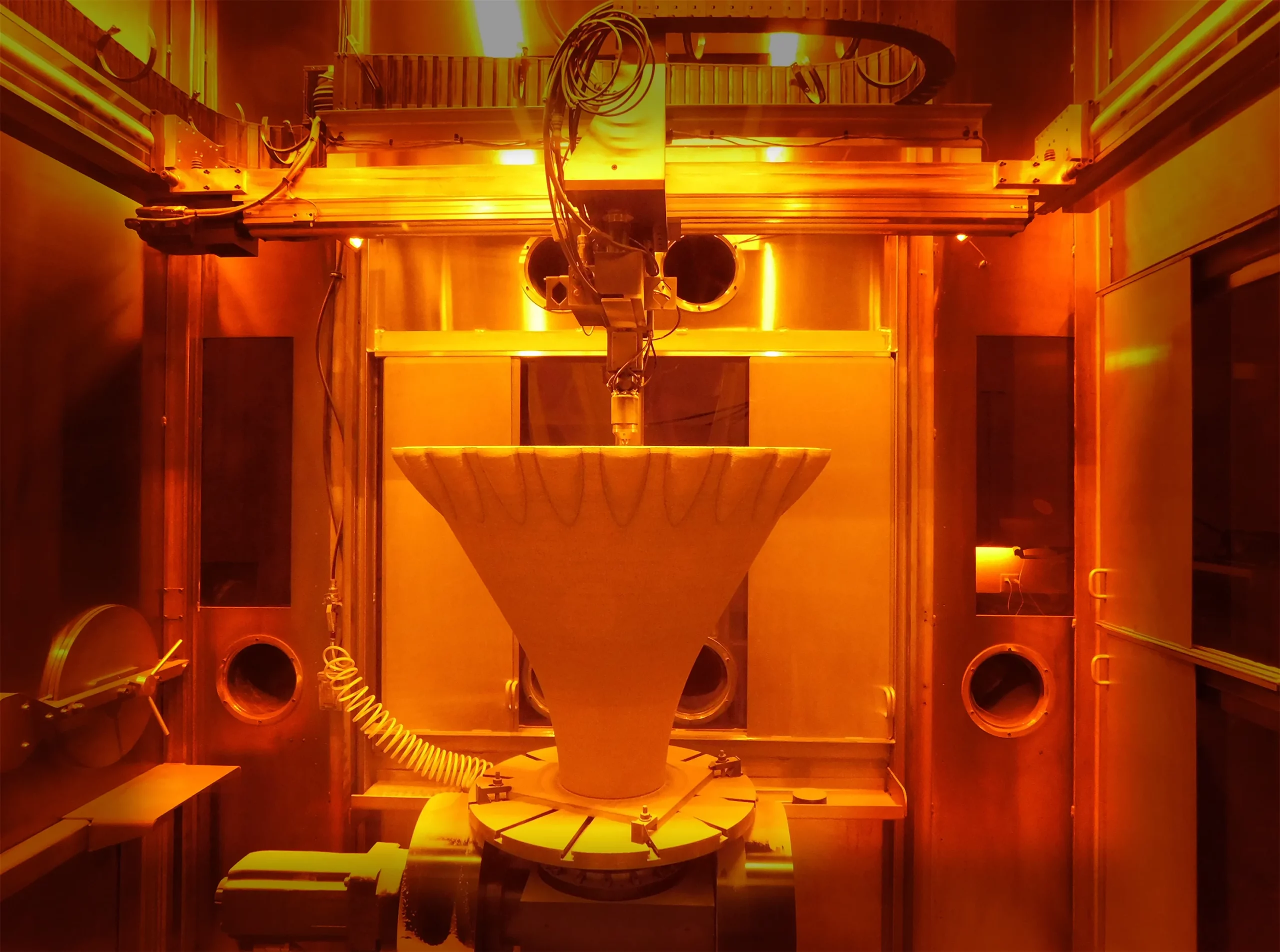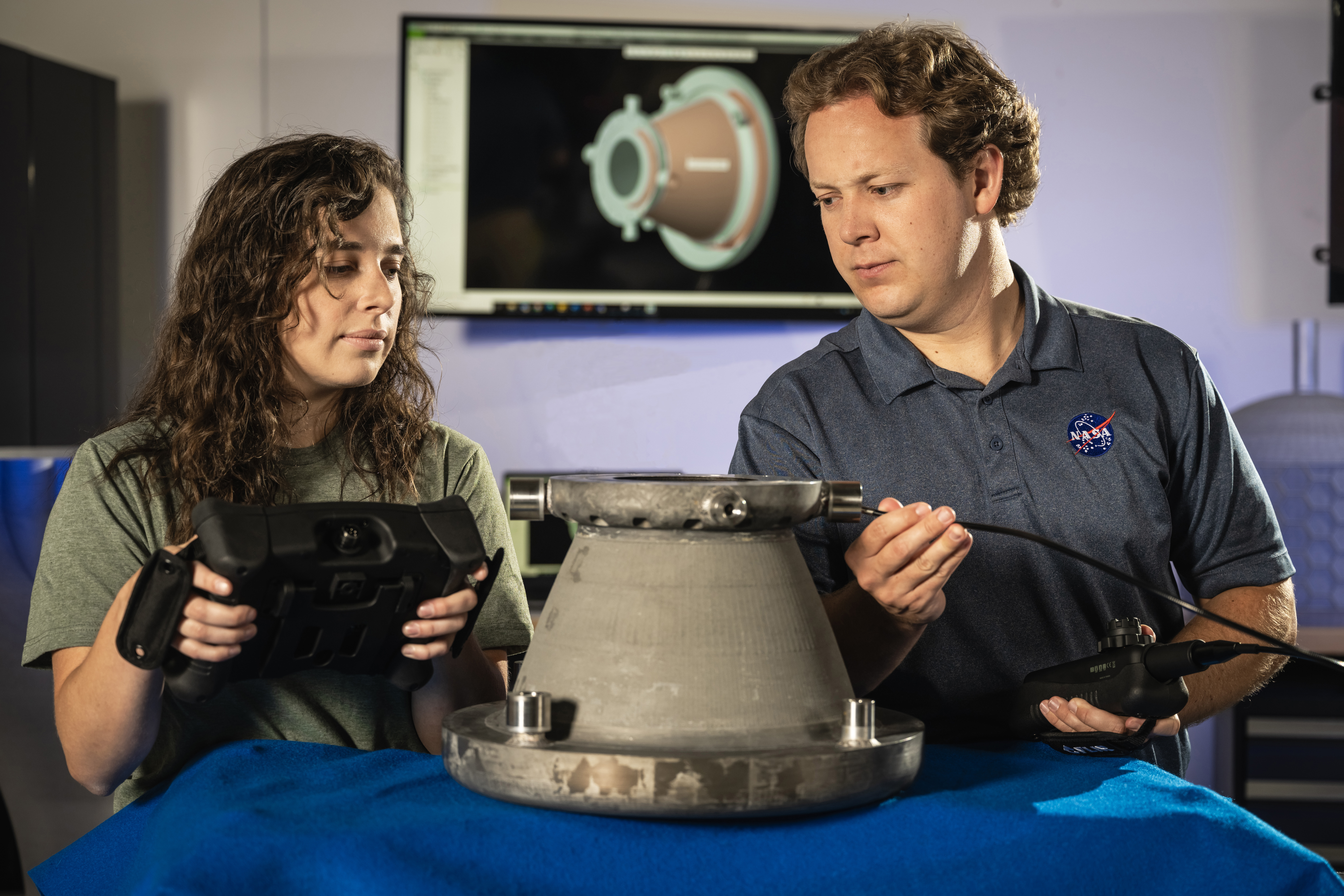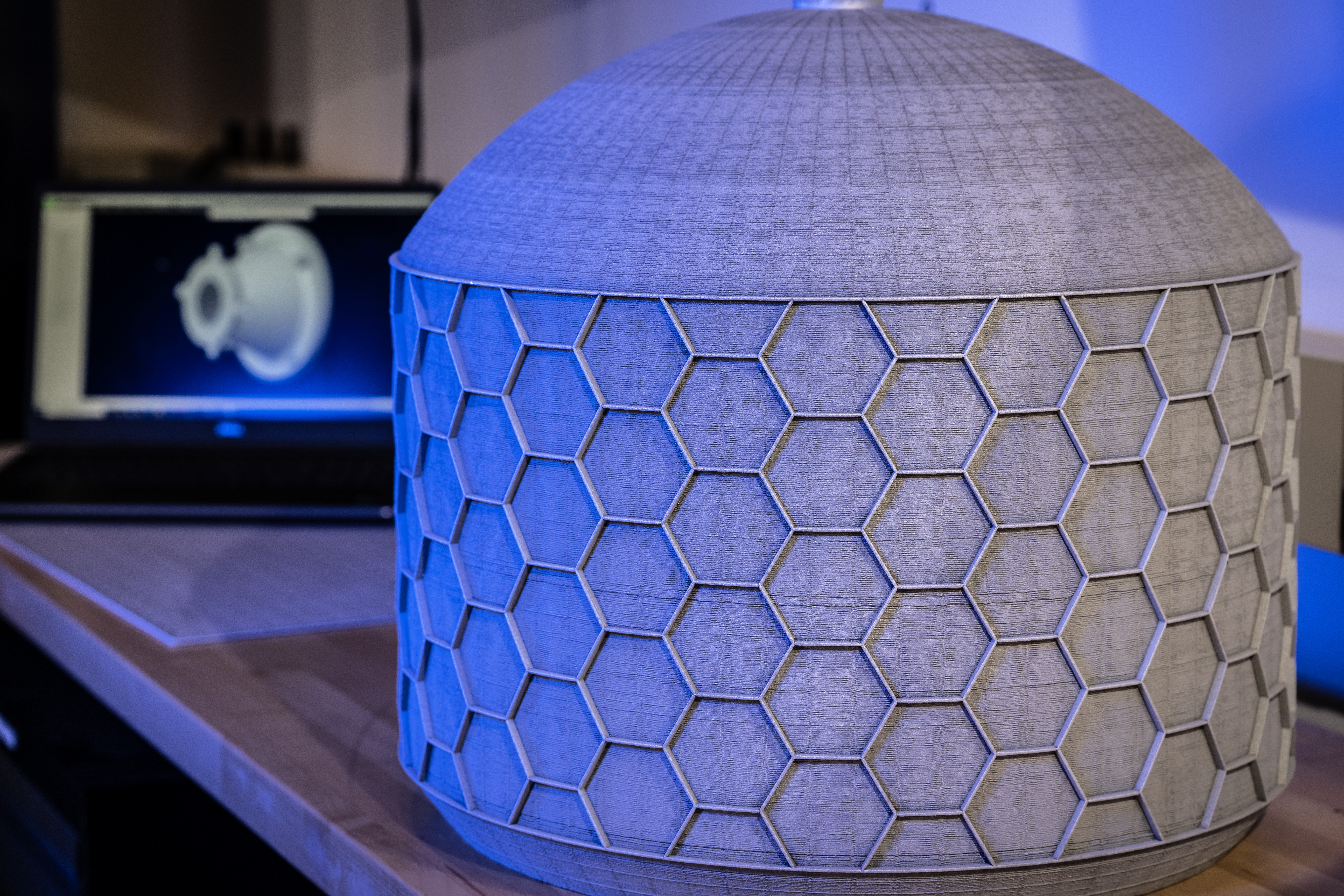In a recent technological breakthrough, NASA has successfully built and tested a lightweight aluminum rocket engine nozzle using 3D printing, positioning deep space missions to carry heavier payloads. This new RAMFIRE nozzle can withstand extremely high internal temperatures, reaching up to 6,000°F (3,315°C), while its outside remains surprisingly cold, even forming icicles. Stemming from collaborations between NASA’s Marshall Space Flight Center, materials developer Elementum 3D, and 3D printer manufacturer RPM Innovations, this achievement marks a pivotal change in how aerospace parts might be made in the future.
Rocket engine nozzles can be made of various materials, including certain types of aluminum. However, what’s different about this initiative is that NASA uses a particular type of aluminum called A6061-RAM2 to 3D print the nozzles. NASA and Elementum 3D jointly developed this aluminum variant to withstand the extreme conditions of rocket propulsion and ensure compatibility with 3D printing.
 RPM Innovation 3D prints large-scale aerospike demonstration nozzle. NASA engineers used the nozzle as a proof of concept for future component designs. Image courtesy of RPM Innovation.
RPM Innovation 3D prints large-scale aerospike demonstration nozzle. NASA engineers used the nozzle as a proof of concept for future component designs. Image courtesy of RPM Innovation.Rocketry revolution
Historically, many rocket engine parts, including nozzles, were made from metals like stainless steel, nickel-based superalloys, and even materials like tungsten for specific high-temperature applications. Aluminum, due to its lightweight nature, has always been an attractive choice for aerospace applications. However, rocket engineers typically avoided using conventional aluminum alloys for rocket engine nozzles due to their low melting points and concerns about welding and high-temperature resilience.
This has changed under NASA’s Reactive Additive Manufacturing for the Fourth Industrial Revolution (RAMFIRE) project. Supported by NASA’s Space Technology Mission Directorate (STMD) Game Changing Development (GCD) program, the initiative focuses on creating lightweight, 3D printed aluminum rocket nozzles.
Furthermore, rocket nozzles could traditionally comprise up to a thousand individual parts, each requiring joining. Instead, NASA built the RAMFIRE nozzle as a single entity. This decreases the need for welding and significantly cuts down the manufacturing time.
 NASA Engineers, Tessa Fedotowsky and Ben Williams, from Marshall Space Flight Center inspect the RAMFIRE nozzle following successful hot-fire testing. Image courtesy of NASA
NASA Engineers, Tessa Fedotowsky and Ben Williams, from Marshall Space Flight Center inspect the RAMFIRE nozzle following successful hot-fire testing. Image courtesy of NASAFor the nozzle’s creation, RPM Innovations used laser powder-directed energy deposition (LP-DED). Along with the A6061-RAM2 aluminum, the South Dakota business employed a specialized powder to construct the RAMFIRE nozzles.
Paul Gradl, RAMFIRE’s principal investigator at NASA Marshall, states, “We’ve reduced the steps involved in the manufacturing process, allowing us to make large-scale engine components as a single build in a matter of days.”
Going galactic
For NASA’s ambitious deep space missions to destinations like the Moon and Mars, the weight of the equipment is a primary concern.
John Vickers, principal technologist for STMD advanced manufacturing, highlights that “Mass is critical for NASA’s future deep space missions. Projects like this mature additive manufacturing along with advanced materials, and will help evolve new propulsion systems, in-space manufacturing, and infrastructure needed for NASA’s ambitious missions to the Moon, Mars, and beyond.”
To prove their viability, two RAMFIRE nozzles underwent extensive testing earlier this summer at Marshall’s East Test Area in Alabama. The tests employed various fuel configurations, and the nozzles faced pressure chambers exceeding 825 psi (pounds per square inch). As a reference, commercial jet engines operate between 200 and 400 psi during takeoff.
Impressively, the nozzles registered 22 starts and operated for close to 10 minutes. Gradl adds that this test series marks a significant milestone for the nozzle: “After putting the nozzle through the paces of a demanding hot-fire test series, we’ve illustrated the nozzle can survive the thermal, structural, and pressure loads for a lunar lander scale engine.”
https://youtu.be/CZgI622kYng?si=Swi615SivmW8mfLu
3D leap
Beyond the nozzles, the RAMFIRE project also used unique aluminum material and 3D printing techniques to build other large components, including a 36-inch diameter aerospike nozzle and a tank specifically designed for cryogenic fluids. The project’s success has sparked interest across the aerospace industry, with several companies evaluating the newly introduced aluminum alloy and the LP-DED manufacturing process for potential applications in satellite component production.
 A vacuum jacket manufacturing demonstrator tank developed under RAMFIRE project using 6061-RAM2 aluminum. Image courtesy of NASA.
A vacuum jacket manufacturing demonstrator tank developed under RAMFIRE project using 6061-RAM2 aluminum. Image courtesy of NASA.Elementum 3D reported on the successful hot-fire tests, noting a boost in confidence among aerospace companies interested in novel high-performance alloys and the flexibility of the blown powder-DED additive manufacturing process.
NASA’s Marshall has applied various forms of metallic additive manufacturing for designing, developing, and testing liquid rocket engine components since 2010. With the introduction of hot-fire testing, they’ve effectively showcased the potential of advanced space technologies to NASA and potential users. This testing provides the essential environments to advance TRL (Technology Readiness Level) levels to the 5/6 range. As a result, NASA’s exploration of 3D printed rocket nozzles not only illustrates the continuous advancements in aerospace engineering but also marks a significant step in helping future deep space missions that can carry more without weighing more. This collaborative endeavor between research, testing, and application promises a bright future for space exploration.
Subscribe to Our Email Newsletter
Stay up-to-date on all the latest news from the 3D printing industry and receive information and offers from third party vendors.
You May Also Like
3D Printed Heat Spreader Could Improve Efficiency of Electronics
The low-hanging fruit for decarbonization has long been improving the efficiency of existing systems, hence the justification for LED lights and ENERGY STAR certified appliances. While such minor moves are...
3D Printing News Unpeeled: Marine Gearboxes, 3D Printed Motors and $1.7 Million in Seed Funding
UK based Equipmake just released their Ampere-220 e-axle system. The system, which is meant for high performance electric cars, was similar to one released on the Ariel HIPERCAR. It has...
CEAD Unveils 36-Meter-Long 3D Printer for Abu Dhabi’s Al Seer Marine
CEAD, a Dutch original equipment manufacturer dedicated to large-format 3D printers, has unveiled what it claims to be the world’s largest robotic arm-based 3D printer. At 36 meters long and...
3D Printed Biocomposites Could Help Reduce Marine Plastic Pollution
Concerns about the impact of plastic litter and microplastics in the oceans are at the forefront of environmental study. For decades, the marine environment has suffered from the degradation of...




































